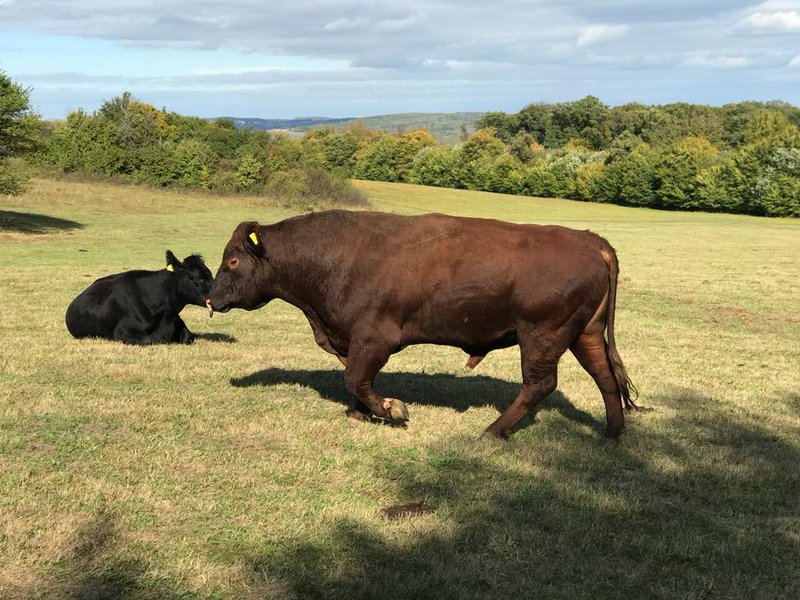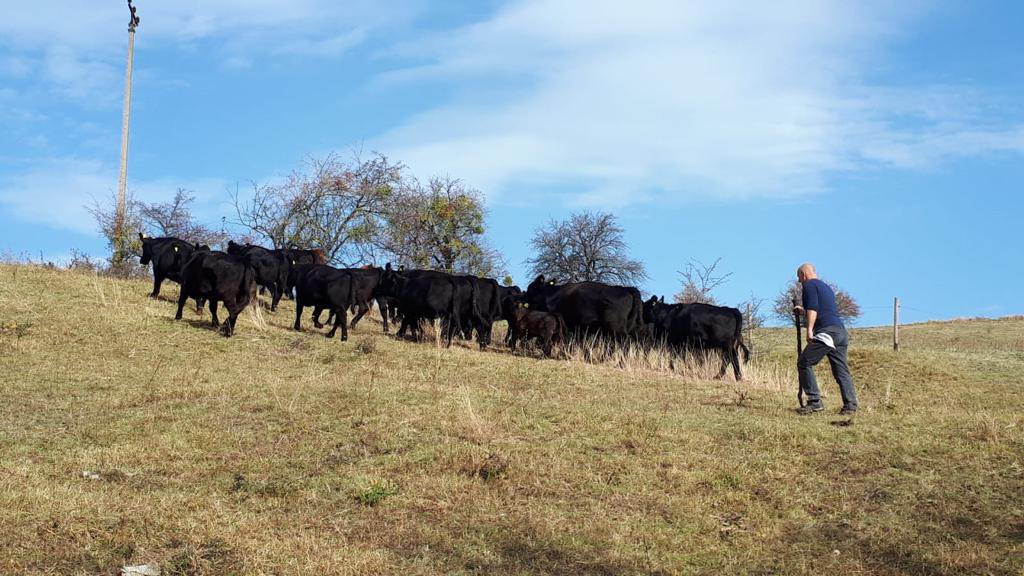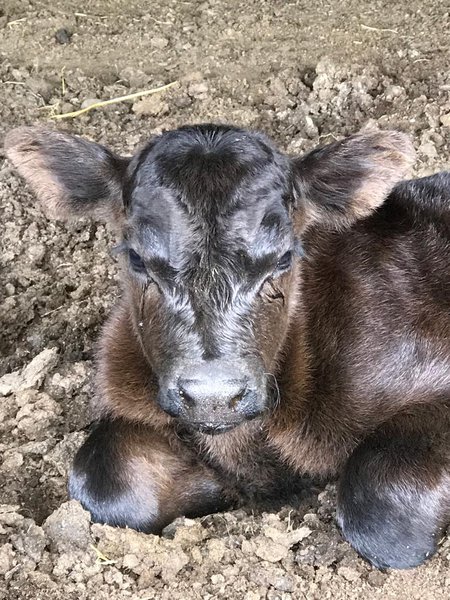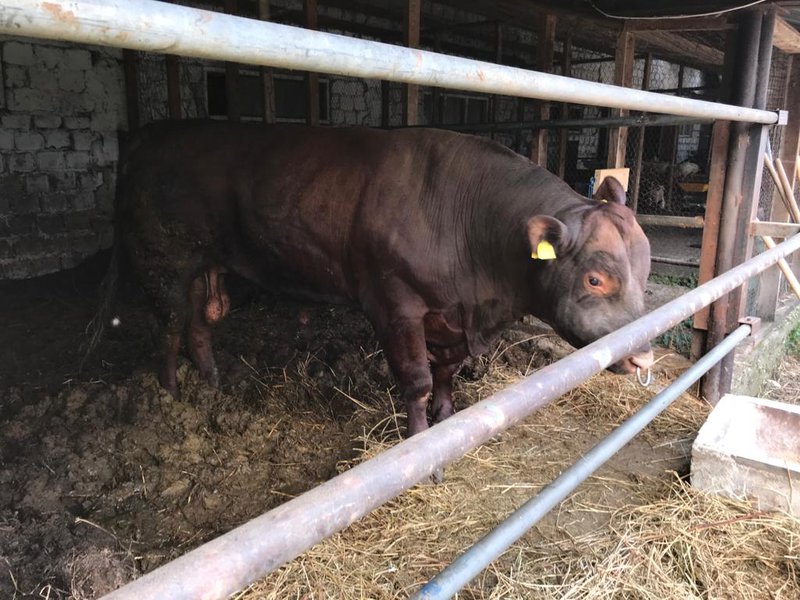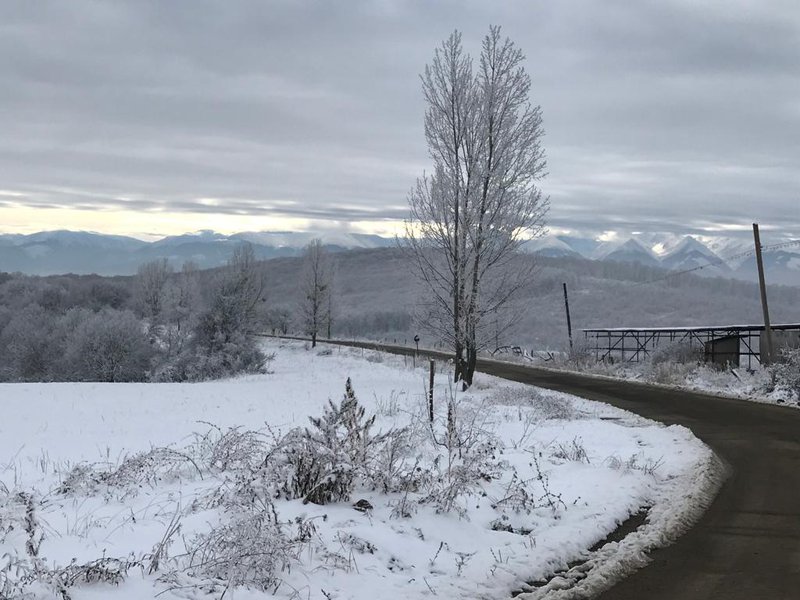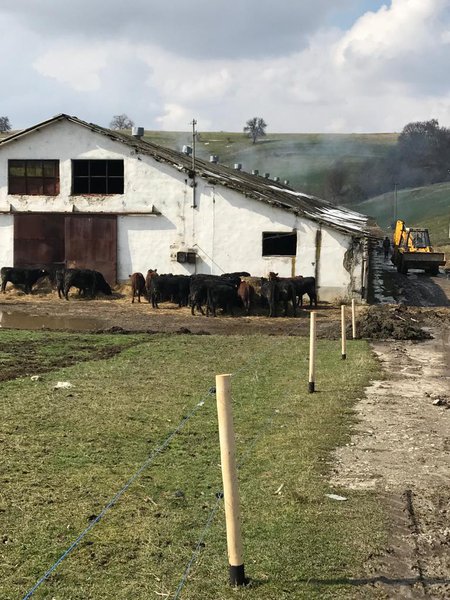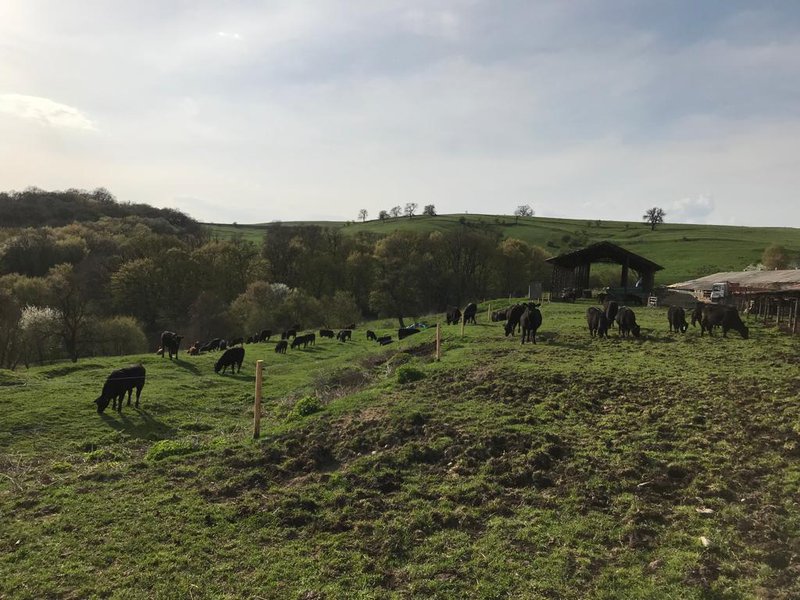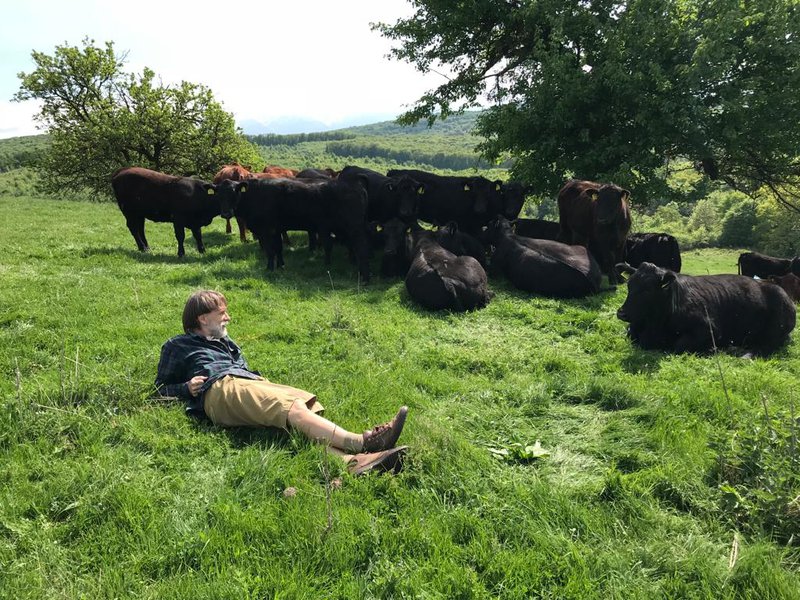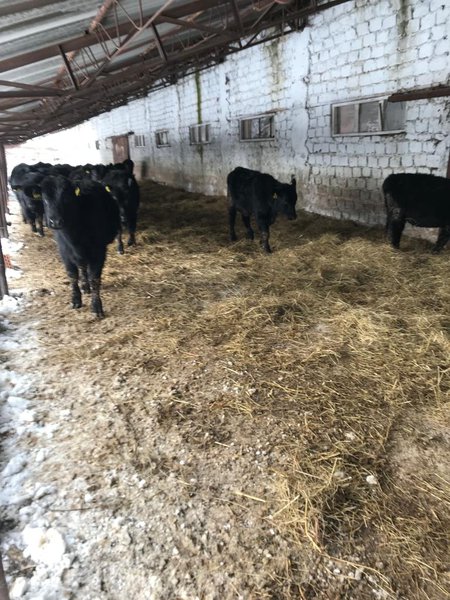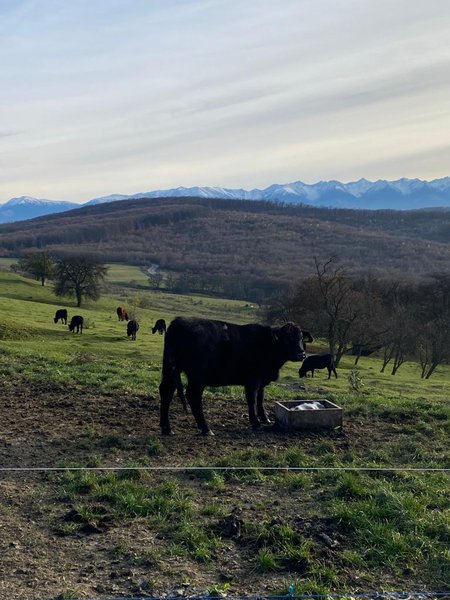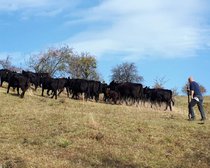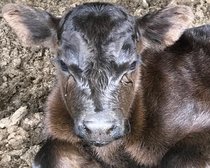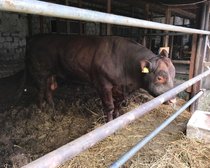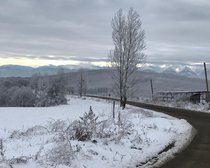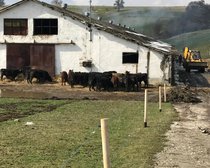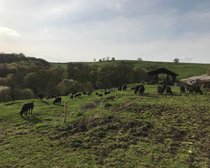Beeffarm in Brasov province Romania
298.0 ha. EUR 1,700,000,- For sale Beef / Cow-calf
Brasov, Brasov, Romania
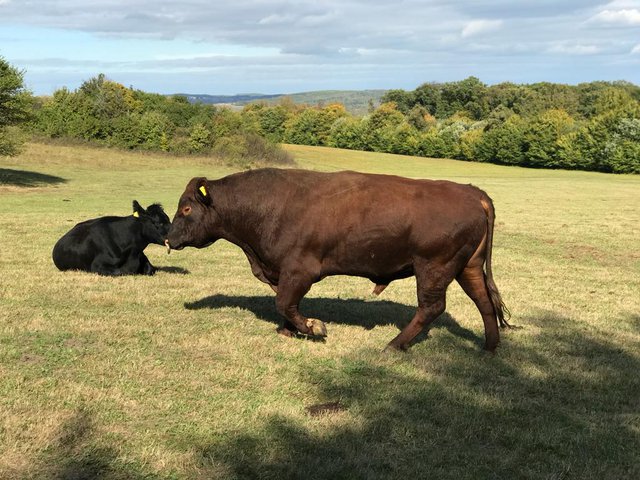
Sale Cattle Farm Romania Carpathians with lots of property.
Location
- The farm is located in Brasov province
Land
The land is divided into the following:
- 297.5 ha total
- Utilisation category building land 24,790 m²
- Utilisation category arable land 130 ha
- Use category pasture 65 ha
- Total 197.5 ha owned
- 100 ha additional Lease for carrying out improved activities
- Rent approx. 130 euros per ha, per year
Buildings
The following buildings are part of the farm located:
- 3,000 sqm (100 x 30 metres ) cattle shed
- 2,000 m² (100 x 20 metres ) cattle shed
- Hay barn of 750 m² (50 x 15 metres )
- Metal warehouse of 200 m² (metres 20 x 10)
- Old state employee building, 3 floors, shelter with good concrete, so easy to renovate the house for agritourism or holiday farm of 240 m² (20 x 12 metres )
- Farm site is paved with concrete and there is a trench silo
- Good asphalt, paved roads up to the farm
- Distance to the village with all facilities is about 3 km
- All buildings need renovation
- Electricity solar panels and batteries with storage of 10 kW
- Old Electricity line present but not connected.
- Water storage capacity of 80,000 litres, with 2 wells
Livestock
The farm is a Beef Angus, all with pedigree and registered Haber Angus with the Romanian Association.
Below is a list of the animals on the farm:
- 76 Suckler cows
- 40 Young cattle
- 50 Calves
- 5 Bulls
Machinery
The sale of the farm also includes all agricultural machinery with which we can carry out all farming activities.
- List of agricultural machinery on request
Advantages
The Carpathian region where the farm is located is an area without drought problems. In the last 20 years there were never problems with a lack of fodder. The beautiful location among the hills also lends itself to a possible tourist activity. With the new European Development Plan for Romania, it will be possible to access important non-refundable funding for the development of both rural and tourist activities that will also make the investment economically attractive. Distance Airport, Brasov, Sibiu, Targu Mures about 100 km.
The company is about 10 years old with a debt-free limited company and can therefore be taken over immediately
- 2 permanent employees who can be taken over
- Reason for sale: The person is elderly and has no successors
- Cattle numbers need to increase to get a good return from it
- The region is very suitable for expension
- 150 hectares and is located around the farm
- Possibilities of more land purchase
- 70,000 euro subsidy per year
Asking price
- 1.7 million euro's
For more information contact:
Gerrie Cox : +40(0)741 647 984
coxgerrie@hotmail.com
-
id2443
-
size298.0 ha.
-
typeBeef / Cow-calf
-
countryRomania
-
countyBrasov
-
cityBrasov
- show on map
Interfarms
-
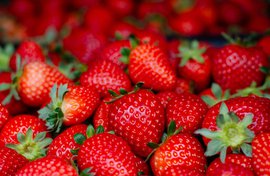 new
newAustralia, 275 Simpson Road Denbarker WA 6324
389.0 ha. Horticulture / Greenhouse...price on request (2535) -
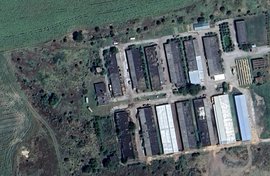 new
newBulgarije, Lom / Valchedram
320.0 ha. Cash crop...EUR 4,500,000,- (2532) -
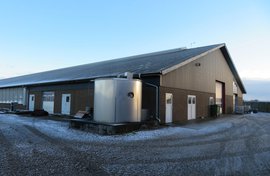 new
newDenmark, Farsø
55.6 ha. Dairy...price on request (2531) -
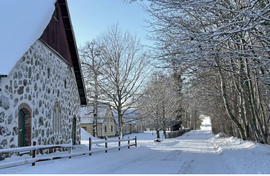 new
newSweden, Smedstorp
213.0 ha. Dairy...price on request (2530)
About Romania
Romania is situated in the south-east of Europe with a total surface of 237.500 square kilometres, 7.160 square kilometres of the total surface is water. The Romanian border is also for a big part water, more than 60% of it. The main water borders are the Danube, frontier with Bulgaria (total frontier length is 608 km); Prut, frontier with Moldavia (450 km); Tisza, frontier with Ukraine (total frontier length is 531 km) and the Black Sea (225 km). Other countries that border on Romania are Hungary (443 km) and Serbia (476 km). Romania counts 22,3 million inhabitants and about 1,9 million of them live in the capital city Bucharest. Because of the verities in landscape there is also a great verity in vegetation. The mountains, Transylvanian Alps and Carpathians, are mainly afforested with oak, lime-tree, sycamore maple on 600-700 meters. Above 700 meter there are growing beeches and higher than 1.200 meter there are coniferous (fir, spurce fir, etc.) growing. Currently 28% of the Romanian country area is forest. Heights above 1.800 meter consist more of alpine pastures. The lower parts of the country, the plateaus and also the lowlands, are used for agricultural objectives. In the Danube delta their are besides field crops also several water plants like the water lily (yellow and white), reed-mace and cane. In this area there are also trees like willow and poplar.
The total number of Romanian inhabitants is, as earlier told, 22,3 million people. More then half of these people live in large cities like Bucharest or Dolj. The other part of the population live in small villages in the rural areas. With a density of approximately 94 people per square kilometre. The average life expectancy for males is 67 years and for females 74 years. The population has a median age of 36 years, which is not very high, but with a low birth rate, the obsolescence in Romania will increase. The Romanian population does not only consist of ethnic Romanian people (89,5%), but there are also several groups of minorities. The largest group of the minorities are the Hungarian people, they form a part of 6,6% of the total population. The Roma’s form a part of 2,5%, the Ukrainian, German, Russian and Turkish 1% and other groups 0,4% of the total population.
The current level of Romanian healthcare is far behind the European classification, and does not contribute enough to increase the healthcare and accession to that healthcare. A great majority of the people is not able to come to the hospital, because they do not have the money to pay their treatment or there is no possibility for transportation to the hospital. Corruption is also still a problem in the hospitals, which makes the entrance for poor people even harder, because they do not have enough money to pay the doctor for a good treatment. An other problem for people who need medical care, are the insurances. There are three groups that have a high risk of not being insured, people who have not got a job in the last 27 months, people who are living in rural areas and do not have a stabile income and people who work in the unofficial economy.
The system of social insurances is obliged for every Romanian with residence in Romania and foreigners with a residence in Romania. Social insurance is optional for members of diplomatic missions in Romania and for foreigners with a temporally stay in Romania. The costs for the insurance are being paid by the employers and the employees, 13% of the gross income has to be hand over, equally shared by the employers and employees. Children and teenagers up to the age of 26 are benefiting of the insurance, without paying contribution. Husband, wife, parents or grandparents without income and where is taken care of by an insured person, have the same benefits as teenagers.
In general the Romanian people are well educated for their job and compared with the wages they earn. Disadvantage of the specific educating, is the difficulty of changing to an other job which is not totally similar to the other. The quality of the education deviates between schools in the cities and in the country side, but the government has made objectives to develop the quality of education in both cities and rural areas. These developments have to contribute to a better, equal and enhanced access to education, and a more efficient educational system. Thereby the reconstruction of the educational system is pointed to prepare a Romanian society based on knowledge and as a resource for modernisation. Most people in Romance countries have a catholic faith, but not in Romania, only 6% of them is catholic. The main religion is Romanian Orthodox, but freedom of religion is guaranteed by constitution since 1991. The average wages in Romania are about € 365,- per month, but that depends on the work people do.
The Romanian climate is a moderate continental climate, with warm summers and quite cold winters. Within the country there are some differences in average temperature and rainfall for example. The northern region is in general a bit colder than the southern region, the average temperature in the north is –4,4°C in January and 18,9°C in June, for the south respectively -2,8°C and 22,9°C. The temperature can rise up to 35°C in the summer on hot days in Bucharest, the temperature in the mountains and on the beach is with 24°C more pleasant. The highest temperature ever measured in Romania was 44,5°C. Most of the rain falls in the month June, and during the year falls approximate 580 mm water in the region of Bucharest and 1.400 mm in the Carpathians. In the Danube delta falls less rain, namely about 400 mm/year. The rainfall declines eastward, but also depends on the height, air circulation and relief. The winters can be very cold with a lot of snow in the period from December until March. The north-eastern wind makes the winter even feel colder. The absolute minimum temperature ever measured was -38,5°C.
With a total surface of 15 million hectare of agricultural land, agriculture takes in a large part of the country. 9 Million hectare of the total surface is reserved for crops. The share of vegetable versus bestial production is equal, but totally depends on the crop yields in that year. Because of the low added value to the products a bad harvest has a tremendous effect on the economy, also because of the large contribution of agriculture to the GNP. The current policy is therefore directed to add a greater value to the products, improve the quality and develop a lasting production, so the income of the agriculture will become more stable. Crops that grow in Romania are wheat, potatoes, legumes, sugar beets, maize, fruit, rice and grapes for wine. The production of sunflowers is still growing, because of a large need of sunflower oil in foreign countries. In contrary to the sunflower production, stock farming has endured a worse development in the last years. Many farms stopped producing milk and meat, so a lot meat had to be imported from other countries. The agricultural lands are divided under many owners, which makes it hard to scale up the farms. Most of the farmers produce as a result of small fields mainly for their own sustenance, and that what is left, will be sold at the local market. Prices for agricultural land are also varying, plots nearby Bucharest are for sale from €3.000,- up to €4.500,- and plots in other regions vary between €800,- and €1.250,-. Most land is of good quality for arable farming. The next few years an increase of the prices is expected, because of a growing interest from West-European investors.
European companies that are already developing activities in Romania are: - Friesland foods - Danone - Dumeco - Unilever - Heineken With companies like Friesland Foods and Danone in the country it should not difficult to sell the milk. Prices for the milk are determined in contracts, basis is a bottom price with the clauses to become a plus on the basis price when the deliverance is continuous and of high quality, or when there is delivered more than an certain amount of litres per day. Besides the sales to processors, a lot of litres are sold in small parts to local people, prices for these sales are mostly higher than processors offer.
For crops it is better to sell the products in two different manners, direct and via traders. Direct sales have to be arranged by the farmer himself and is a very time-consuming activity, the advantage is that products can be sold for a higher price. Through also packing the products more value can be added to the products, with a higher price as result. It is the best to sell to a few large supermarkets, so the farmer does not become to dependent. Supermarkets require a high quality of the products, when that can be established, sales will be guaranteed for a longer period. Leaving sales to a trader is easier but might not be as profitable as direct sales.The supply of products like fertilizers and pesticides is alright, those products can easily be bought and the suppliers are well organised. A good supply of resources is important to reach a higher production, because insects can cause large damage when they are not exterminated, and also to less fertilizer costs yield.
